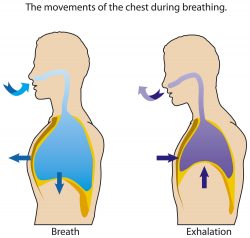Living Near a Busy Road Can Increase Depression
 Recent research reveals that living in proximity to heavy traffic is associated with an increased probability of depression in elderly individuals. The correlation between polluted air and mental well-being, particularly on a broader population scale, presents significant concerns as urbanization continues to expand worldwide. Almost 9 million individuals in the United States participated in the survey, with over 1.5 million ultimately suffering from depression. The outcomes revealed that those who were exposed to heavier concentrations of pollutants emitted from traffic and industrial sources were more vulnerable.
Recent research reveals that living in proximity to heavy traffic is associated with an increased probability of depression in elderly individuals. The correlation between polluted air and mental well-being, particularly on a broader population scale, presents significant concerns as urbanization continues to expand worldwide. Almost 9 million individuals in the United States participated in the survey, with over 1.5 million ultimately suffering from depression. The outcomes revealed that those who were exposed to heavier concentrations of pollutants emitted from traffic and industrial sources were more vulnerable.
Late-life depression deserves as much attention from the public and researchers as Alzheimer’s and other neurological conditions. The potential risks of air pollution are significant, as there is no clear threshold for exposure. Evidence indicates a harmful correlation between air pollution and neurodegenerative diseases among older adults, but the impact on late-life mental health disorders like geriatric depression remains poorly understood.
This research identifies a harmful link between long-term exposure to air pollution and an increased risk of this mental health condition. A link between higher rates of depression and exposure to nitrogen dioxide (NO2), fine particulate matter also identified as PM2.5, and ozone (O3) was observed. Primary sources of NO2 and PM2.5 include engines, factories, wood-burning stoves, and agriculture, whereas O3 is a byproduct of their interaction with sunlight during warm summer days.
In this decade-long study involving participants over the age of 64, the team utilized insurance claims to determine diagnoses of depression. The study confirms that exposure to three distinct pollutants raises the risk of acquiring depression. To accurately measure the level of pollution a person is exposed to, the team used computer models and considered variations in residential locations across the years. The correlation between air pollutants and depression highlights the importance of addressing environmental factors in promoting mental health.
Previous research conducted on mice has indicated that inhalation of air pollutants via the nose can potentially result in inflammation in the brain, ultimately leading to activation of stress hormones that are linked to cognitive illnesses. This includes depression. Additionally, the aging process can worsen these effects by releasing pro-inflammatory chemicals. While our knowledge of the consequences on mental disorders in later life, such as geriatric depression, is limited, we have discovered that prolonged exposure to air pollution presents harmful associations with an increased risk.
This study calls for deeper exploration of environmental risk factors, including air pollution and living conditions, to combat geriatric depression. By establishing significant correlations between depression and modifiable factors like air pollution, we can implement population-based solutions, such as air quality regulation, emission control, and greener urban planning, to prevent this condition. The findings serve as a scientific imperative to prioritize mitigating environmental risks in geriatric mental health.
To view the original scientific study click below:
Association of Long-term Exposure to Air Pollution With Late-Life Depression in Older Adults in the US



 The term ‘Blue Zones’ identifies geographical regions where people live the longest and healthiest lives. As a result they have the highest percentage of centenarians. These regions are found in Sardinia, Italy; Ikaria, Greece; Okinawa, Japan; Nicoya, Coasta Rica; and Loma Linda, California, USA. After extensive research, scientists have determined that lifestyle habits shared among Blue Zone communities contribute to their longevity. This includes their diet, exercise regimen, spiritual beliefs, and daily practices. Interestingly, many Blue Zone centenarians consume their most substantial meal of the day in the morning and smaller meals later in the day. They prefer whole foods mostly from plants, such as beans, vegetables, oatmeal, fruit, and nuts, while avoiding refined carbohydrates, added sugars, and processed foods. Through these dietary practices, many of them have been able to avoid chronic diseases well into their early 90s.
The term ‘Blue Zones’ identifies geographical regions where people live the longest and healthiest lives. As a result they have the highest percentage of centenarians. These regions are found in Sardinia, Italy; Ikaria, Greece; Okinawa, Japan; Nicoya, Coasta Rica; and Loma Linda, California, USA. After extensive research, scientists have determined that lifestyle habits shared among Blue Zone communities contribute to their longevity. This includes their diet, exercise regimen, spiritual beliefs, and daily practices. Interestingly, many Blue Zone centenarians consume their most substantial meal of the day in the morning and smaller meals later in the day. They prefer whole foods mostly from plants, such as beans, vegetables, oatmeal, fruit, and nuts, while avoiding refined carbohydrates, added sugars, and processed foods. Through these dietary practices, many of them have been able to avoid chronic diseases well into their early 90s. In a recent study conducted by Brazilian researchers, it has been discovered that incorporating strength training exercises, such as weightlifting, into your weekly workout routine can effectively lower high blood pressure. This finding could have a crucial impact on the 120 million American adults suffering from hypertension.
In a recent study conducted by Brazilian researchers, it has been discovered that incorporating strength training exercises, such as weightlifting, into your weekly workout routine can effectively lower high blood pressure. This finding could have a crucial impact on the 120 million American adults suffering from hypertension. Recent research has revealed that engaging in physical activity in the morning can significantly decrease the risk of stroke and heart disease. This study highlights that individuals who allocate their workouts during early hours are in a favorable position. The benefits of exercise on one’s cardiac health have already been established, but this novel study specifically pinpoints morning activity as the most advantageous.
Recent research has revealed that engaging in physical activity in the morning can significantly decrease the risk of stroke and heart disease. This study highlights that individuals who allocate their workouts during early hours are in a favorable position. The benefits of exercise on one’s cardiac health have already been established, but this novel study specifically pinpoints morning activity as the most advantageous.  Scientific studies are building evidence that our environment and lifestyle greatly impact our health and lifespan. Have you ever worried about inheriting a family history of disease? The question of whether our genetics predestine our health outcomes has long been debated. However, while genetics may seem like an undeniable influence, a recent study reveals that our behaviors have a stronger influence on length of life than our DNA. These findings highlight the profound impact our choices have on our longevity.
Scientific studies are building evidence that our environment and lifestyle greatly impact our health and lifespan. Have you ever worried about inheriting a family history of disease? The question of whether our genetics predestine our health outcomes has long been debated. However, while genetics may seem like an undeniable influence, a recent study reveals that our behaviors have a stronger influence on length of life than our DNA. These findings highlight the profound impact our choices have on our longevity. A recent study tracked the health of over 7,000 middle-aged and older Canadians for three years, investigating whether increased social activity led to better long-term health outcomes. The study found that individuals who engaged in leisure activities and volunteer work were more likely to maintain excellent health and less likely to experience cognitive, physical, emotional, or mental illnesses. To qualify as successfully aging, participants had to be free of any serious conditions that hindered daily activities while also reporting high levels of happiness and good health. Only individuals who qualified at the beginning of the study were monitored to determine if social participation played a role in maintaining their excellent health.
A recent study tracked the health of over 7,000 middle-aged and older Canadians for three years, investigating whether increased social activity led to better long-term health outcomes. The study found that individuals who engaged in leisure activities and volunteer work were more likely to maintain excellent health and less likely to experience cognitive, physical, emotional, or mental illnesses. To qualify as successfully aging, participants had to be free of any serious conditions that hindered daily activities while also reporting high levels of happiness and good health. Only individuals who qualified at the beginning of the study were monitored to determine if social participation played a role in maintaining their excellent health. Recent experiments conducted at the Health and Human Performance Lab at the University of Houston have unveiled a groundbreaking discovery in the field of metabolic health. By using a muscle in your lower leg, this exercise can regulate blood sugar better than traditional methods like weight loss, diet, and low- to moderate-intensity daily exercise. Called the “soleus pushup”, this metabolism-boosting technique can be performed while sitting, making it a perfect option for those who spend a considerable amount of time sitting. Considering that the average American spends 10 hours a day in a sedentary position, this exercise is a simple yet effective way to combat the negative effects of a sedentary lifestyle.
Recent experiments conducted at the Health and Human Performance Lab at the University of Houston have unveiled a groundbreaking discovery in the field of metabolic health. By using a muscle in your lower leg, this exercise can regulate blood sugar better than traditional methods like weight loss, diet, and low- to moderate-intensity daily exercise. Called the “soleus pushup”, this metabolism-boosting technique can be performed while sitting, making it a perfect option for those who spend a considerable amount of time sitting. Considering that the average American spends 10 hours a day in a sedentary position, this exercise is a simple yet effective way to combat the negative effects of a sedentary lifestyle. Late night eating can have a significant impact on three key components of body weight regulation, including calorie intake regulation, calories burned, and molecular changes in fat tissue. Brigham and Women’s Hospital researchers have found that this can increase the risk of obesity, which affects approximately 42 percent of adults in the United States and an estimated 650 million globally.
Late night eating can have a significant impact on three key components of body weight regulation, including calorie intake regulation, calories burned, and molecular changes in fat tissue. Brigham and Women’s Hospital researchers have found that this can increase the risk of obesity, which affects approximately 42 percent of adults in the United States and an estimated 650 million globally. Recent advancements in public health and hygiene have significantly increased the average human lifespan. In the U.S., the average lifespan is currently 77 years. Although some individuals reach the impressive age of 100 years, the reasons for such exceptional longevity are not fully understood. A research team has discovered that gut bacteria may hold the key to unlocking the mystery behind long life. This groundbreaking research provides new insight into the factors that contribute to human longevity.
Recent advancements in public health and hygiene have significantly increased the average human lifespan. In the U.S., the average lifespan is currently 77 years. Although some individuals reach the impressive age of 100 years, the reasons for such exceptional longevity are not fully understood. A research team has discovered that gut bacteria may hold the key to unlocking the mystery behind long life. This groundbreaking research provides new insight into the factors that contribute to human longevity. According to a recent study by scientists at Massachusetts General Hospital, increasing life span could be as simple as breathing less oxygen. While many seek to extend their lifespan through caloric restriction or exercise, this study offers an intriguing alternative. When mice were kept at oxygen levels equivalent to the base camp of Mount Everest of 11%, they lived an impressive 50 percent longer than their counterparts exposed to ambient levels.
According to a recent study by scientists at Massachusetts General Hospital, increasing life span could be as simple as breathing less oxygen. While many seek to extend their lifespan through caloric restriction or exercise, this study offers an intriguing alternative. When mice were kept at oxygen levels equivalent to the base camp of Mount Everest of 11%, they lived an impressive 50 percent longer than their counterparts exposed to ambient levels.